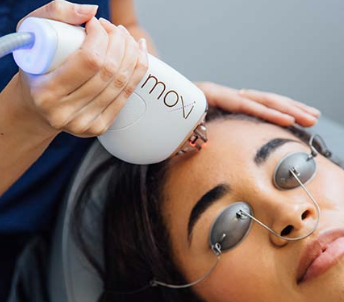
MOXI and Halo Laser Skin Rejuvenation
Sciton is the leader in laser skin rejuvenation devices with their category leading MOXI and Halo line of laser skin resurfacers. Gain exceptional outcomes on a wide variety of skin conditions.
What is laser skin rejuvenation?
Laser skin rejuvenation, also known as laser skin resurfacing, is a procedure that uses light beams to remove layers of skin to improve skin’s appearance. A laser device, such as ones from Candella, are designed specifically for this purpose.
There are different types of laser equipment and techniques.
Intense Pulsed Light (IPL): Not technically a laser, but often used for treating sun damage, hyperpigmentation, and uneven skin tone.
CO2 lasers: Highly effective for deep wrinkles, scars, warts, and other significant skin imperfections, but can have a longer recovery time due to the deeper penetration.
Erbium lasers: Used for moderate wrinkles, fine lines, and superficial skin concerns, often with a shorter recovery period compared to CO2 lasers.
Other important laser skin resurfacing options:
Fractional lasers: Deliver laser energy in tiny beams, creating microscopic treatment zones which can minimize downtime while still achieving noticeable results.
Pulsed-dye lasers (PDL): Primarily used to treat redness, rosacea, and broken capillaries due to their ability to target blood vessels.
What does laser skin resurfacing do?
If you have fine lines or wrinkles around your eyes or mouth or on your forehead, shallow scars from acne, or non-responsive skin after a facelift, then you may be a good candidate for laser skin resurfacing.
You may also be a good candidate if you have:
- Warts
- Age spots or liver spots
- Skin scars from birthmarks
- Sun-damaged skin
- Enlarged oil glands on your nose
- Birthmarks such as linear epidermal nevi
Laser skin rejuvenation can address a variety of skin concerns, including:
Sun-damaged skin
Acne scars
Birthmarks
Discoloration
Fine lines and wrinkles
Liver spots
Precancerous lesions
Rosacea
How does laser skin resurfacing work?
Laser skin resurfacing uses light energy to remove layers of skin and stimulate collagen production, which can improve the skin’s appearance:
Skin regrowth: As the skin heals and regrows, the treated area is smoother and tighter.
Light energy: The laser emits light energy that is absorbed by the skin’s water and melanin. This thermal energy destroys the surrounding tissue.
Collagen production: The heat from the laser stimulates the production of collagen, a protein that improves skin firmness and texture.
There are two main types of laser skin resurfacing: ablative and nonablative:
Ablative: Removes the top layer of skin and heats the lower layers. This method can treat a variety of skin conditions, including wrinkles, scarring, and actinic keratoses.
Nonablative: Stimulates collagen growth without removing the top layer of skin. This method is less aggressive than ablative laser resurfacing and has a shorter recovery time, but the results are more subtle.
What can I expect?
The doctor may treat wrinkles around your eyes, mouth, or forehead individually or treat your entire face. For small areas, the practitioner will numb the areas to be treated with a local anesthetic. Treating just parts of the face takes about 30 to 45 minutes. A full-face treatment takes up to two hours.
What is the next step?
Book a consultation with your local medspa810 to find out more about our laser skin resurfacing options!
What Our Clients Are Saying…

JL. (Washington, DC)
5 stars
Krissy Williamson
5 stars
